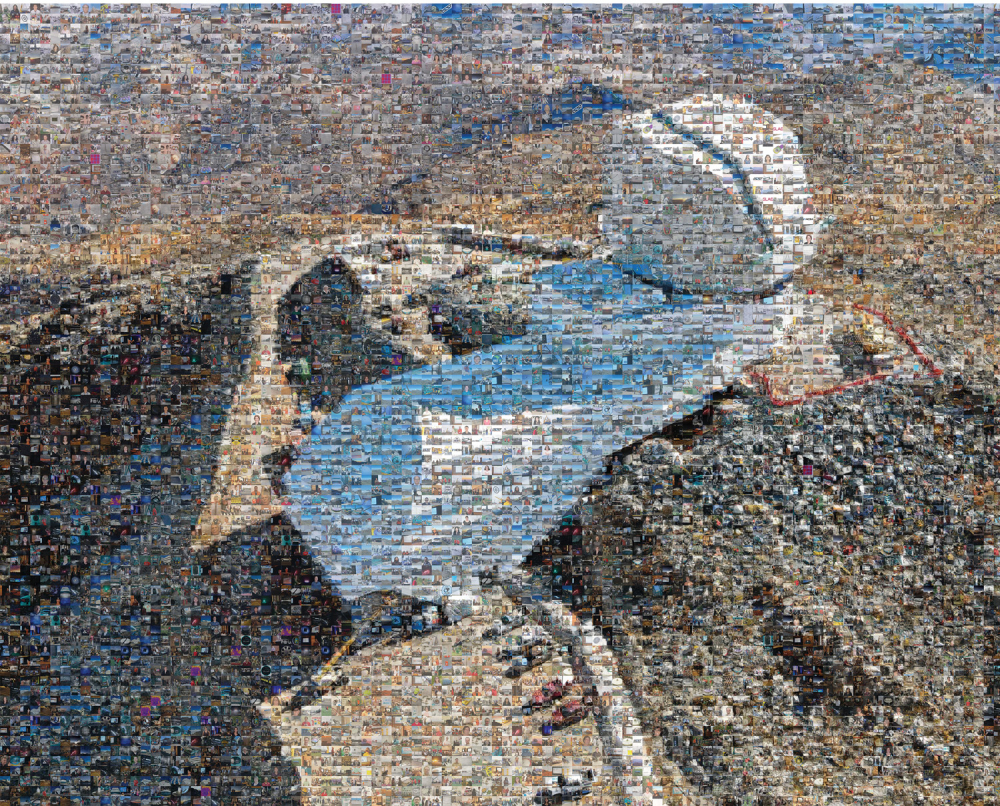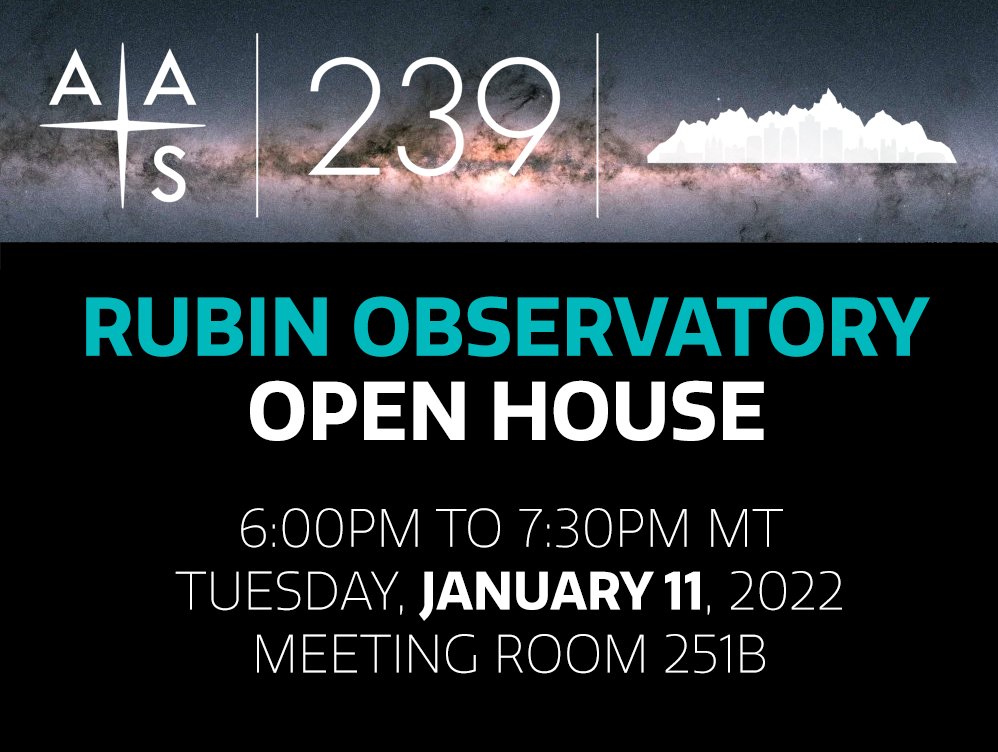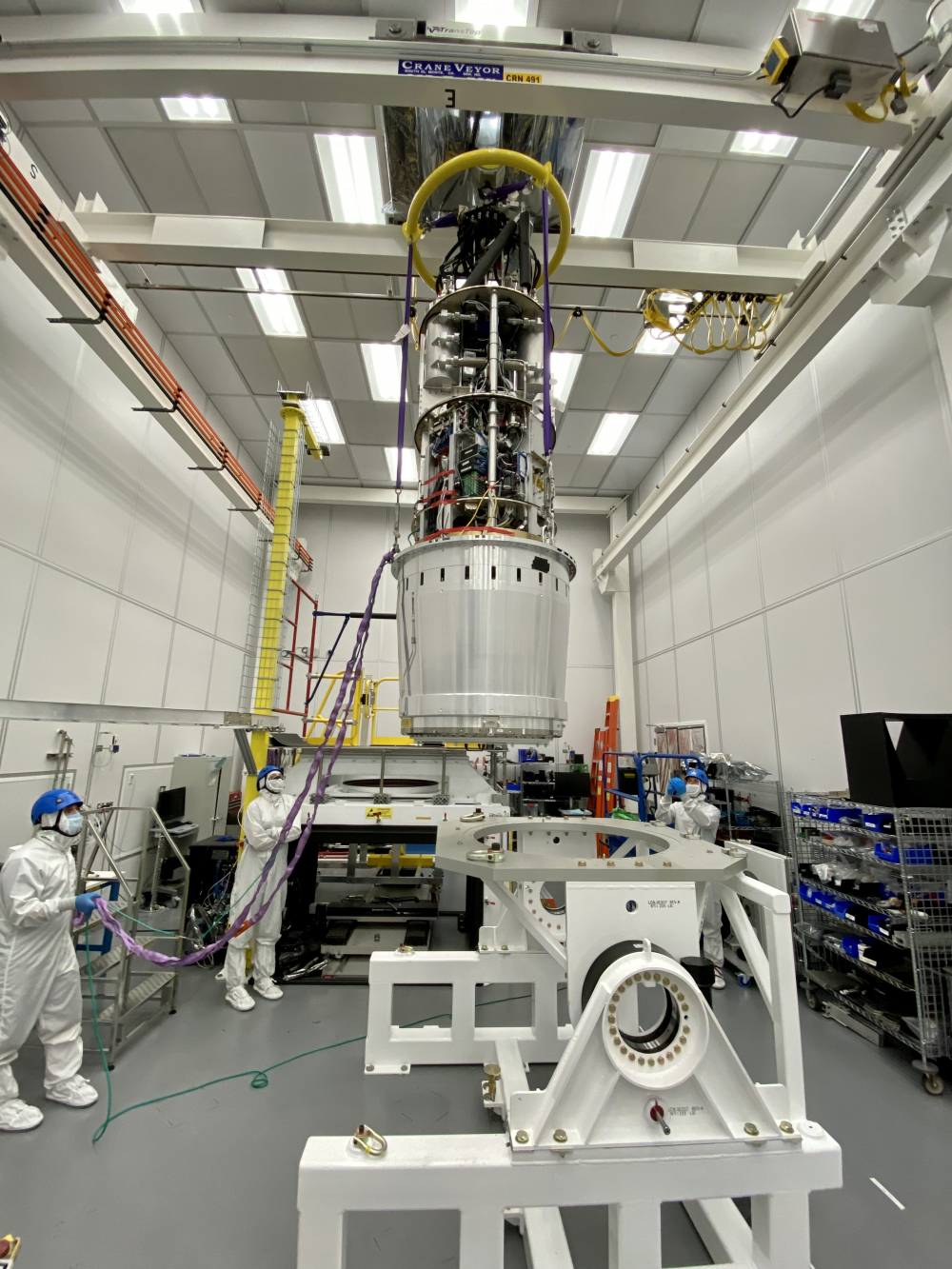PROJECT & SCIENCE NEWS - NOTICIAS DEL PROYECTO Y DE LA CIENCIA
Registration is now open for an interactive workshop, “From Data to Software to Science with the Rubin Observatory LSST,” scheduled for March 28-30, 2022, in New York City. Participants in this workshop will have the opportunity to discuss high-priority LSST science cases, and the software and computing resources they require, with other scientists from across the Rubin community. Workshop size is limited; please register by January 26, 2022.
The LSST Data Management (DM) team recently released Version 23.0.0 of the LSST Science Pipelines. This is the latest periodic release, following 22.0.0 which came out in July 2021. Details about new features and bug fixes in the latest release are linked from this announcement on community.lsst.org.
Intensive work is in progress at the summit in preparation for the installation of the Commissioning Camera (ComCam) on the Telescope Mount Assembly, currently scheduled for March. Activities include refinement of the guiding system for the insertion of the Camera, improving personnel access for that procedure, and installing a section of the telescope pier perimeter platform. Meanwhile testing on the ComCam instrument itself and all of its support components continues in the main maintenance and integration hall of the Summit Facility.
Other recent summit activities include initial work (by dome vendor EIE and the Rubin summit team) on dome rotation control, the first element of the dome software system to move from laboratory testing to onsite installation. Installation of weather-protective corrugated aluminum cladding on the dome is also progressing; this work began in November and is expected to be complete in early March, ahead of winter weather in Chile.
January staff highlights are featured on the Project website; read about your colleagues Johnny Esteves, Margaux Lopez, Juan Lopez, and Paul O’Connor at this link.
Rubin Observatory swag items, including t-shirts, coffee mugs, tote bags, and more, are available for purchase in our not-for-profit online store.
RUBIN IN THE MEDIA
The Rubin Observatory LSST Camera filters were featured in a December 20th article, “Why modern astronomy needs photometry, not just more light,” available at this link.
OPERATIONS UPDATES:
The report by the Rubin-Euclid Derived Data Products (DDP) Working Group on behalf of the DDP community is now available. The report recommends a science-driven initial set of DDPs to be shared promptly and simultaneously with both the Euclid Consortium and all Rubin Observatory LSST data rights holders for scientific use, in a way that protects the unique science of each collaboration and respects the data policies of each collaboration. More information and a link to the report can be found on community.lsst.org.
Rubin Observatory's Data Preview 0 (DP0) has had a successful first six months. All are welcome to join the delegates in the bi-weekly virtual "DP0 Delegate Assembly" on January 28th (details at this link), where the Rubin Community Engagement Team will provide a review of the first phase of DP0, titled "DP0.1, A Half-Year In Review." Phase 2 of the Rubin Observatory’s Data Preview 0 (DP0.2) will begin June 30, 2022. Up to 300 new participants will be identified for DP0.2 which will bring the total number to 600. For more information about when and how to apply, see this announcement on community.lsst.org.
ANNOUNCEMENTS & OPPORTUNITIES:
Changes in leadership for Rubin Construction, were announced in December and became effective January 3, 2022. Zeljko Ivezic has assumed the role of Director of Rubin Construction (announced in this news item). Sandrine Thomas is now the Deputy Director for Rubin Construction for AURA/NSF, and Steve Ritz has taken on the role of Project Scientist for Rubin Construction (both pending NSF approval). Aaron Roodman is now serving as LSST Camera Program Lead as well as Deputy Director for Rubin Construction for SLAC/DOE. See the announcements in this news item. Congratulations to Zeljko, Sandrine, Steve, and Aaron!
Justine Schaen began working with the Education and Public Outreach (EPO) team as Astronomy Education Specialist on December 1st, 2021. Justine will divide her time between the Rubin EPO program, where she will be supporting development of the Rubin Education program, and the NOIRLab Education and Engagement group, where she will develop program assessments and work with the team to produce deliverables for the US Extremely Large Telescope Program.
Parker Fagrelius joined the Commissioning team on January 18th in the role of Commissioning-Calibration Support Scientist. Parker will be based in Tucson, working with Patrick Ingraham to get the Rubin calibration systems assembled, tested, and shipped to Chile. Parker will also assist in deploying the Rubin calibration systems in Chile once they arrive.
Several individuals joined the pre-Operations Data Production team in January: Yuyi Guo (Fermilab) as Rucio service owner, Wen Guan (University of Wisconsin) as PanDA team member, Tom Lehman and Paul Wefel (Lawrence Berkeley National Laboratory) as network engineers, and Torre Wenaus (Brookhaven) as PanDA team lead.
INFO FOR PROJECT MEMBERS:
If you’d like to schedule a one-on-one meeting with Victor or Zeljko, please fill out this form to indicate your preferred (and backup) date and time.
There is also an anonymous “suggestion box” for anyone to offer feedback at this link.
UPCOMING MEETINGS with RUBIN OBSERVATORY INVOLVEMENT
(those with an asterisk* are LSSTC funded):
2022
2021
January 26 | Registration deadline for “From Data to Software to Science with the Rubin Observatory LSST” workshop |
NOTICIAS DEL PROYECTO Y DE LA CIENCIA
Ya está abierta la inscripción para el taller interactivo, “From Data to Software to Science with the Rubin Observatory LSST,” programado del 28 al 30 de marzo, 2022 en la ciudad de Nueva York. Los participantes de este taller tendrán la oportunidad de discutir los casos científicos de alta prioridad de LSST, y los recursos de software e informáticos que se requieren, con otros científicos de la comunidad de Rubin. Los cupos para el taller son limitados; por favor inscríbase antes del 26 de enero, 2022.
El equipo de Gestión de Datos (DM) de LSST lanzó recientemente la versión 23.0.0 de los Dato Ductos Científicos de LSST. Este es el último lanzamiento periódico, después de la versión 22.0.0 que salió en julio de 2021. Los detalles sobre las nuevas funciones y las correcciones de errores en la última versión están vinculados a este anuncio en community.lsst.org.
En el cerro, se está llevando a cabo un intensivo trabajo de preparación para la instalación de la Cámara de Puesta en Servicio (ComCam) en el Conjunto de la Montura del Telescopio, actualmente programada para marzo. Las actividades incluyen el perfeccionamiento del sistema de guía para la inserción de la Cámara, la mejora en el acceso del personal para dicho procedimiento y la instalación de una sección de la plataforma perimetral del pier del telescopio. Mientras tanto en la sala de integración del Summit Facility, continúan las pruebas en el instrumento ComCam y de todos sus componentes de soporte.
Otras actividades recientes en el cerro incluyen el trabajo inicial (por parte del proveedor de la cúpula EIE y el equipo del Sitio de Rubin) del control de rotación de la cúpula, el primer elemento del sistema de software de la cúpula que pasa de las pruebas de laboratorio a su instalación en el sitio. En la cúpula se encuentra en progreso la instalación del revestimiento de aluminio corrugado resistente a la intemperie; este trabajo comenzó en noviembre y se espera que esté terminado a principios de marzo, antes del clima invernal en Chile.
Los perfiles de personal destacado para el mes de enero se encuentran en el sitio web del Proyecto; lea sobre sus colegas Johnny Esteves, Margaux Lopez, Juan Lopez, y Paul O’Connor en este enlace.
Los artículos promocionales del Observatorio Rubin, incluyendo camisetas, tazas de café, bolsas de mano y más, están disponibles para su compra en nuestra tienda en línea sin fines de lucro.
RUBIN EN LOS MEDIOS
El 20 de diciembre, los Filtros de la Cámara LSST del Observatorio Rubin fueron destacados en el artículo, "Por qué la astronomía moderna necesita fotometría, no solo más luz", que se encuentra disponible en este enlace.
ACTUALIZACIÓN DE OPERACIONES:
El informe del Grupo de Trabajo de los Productos de Datos Derivados de Rubin-Euclid (DDP) por parte de la comunidad DDP ya está disponible. El informe recomienda que se comparta un conjunto inicial de DDPs impulsado por la ciencia simultáneamente tanto con Euclid Consortium como con todos los titulares de derechos de datos LSST del Observatorio Rubin para uso científico, de una manera que proteja la ciencia única de cada colaboración y que respete las políticas de datos de cada colaboración. Se puede encontrar más información y un enlace al informe en community.lsst.org.
La Vista Previa de Datos 0 (DP0) del Observatorio Rubin ha tenido unos exitosos primeros seis meses. Todos son bienvenidos a unirse a los delegados quincenalmente en la "Asamblea de Delegados DP0" virtual el 28 de enero (detalles en este enlace), donde el Equipo de Participación Comunitaria de Rubin brindará una revisión de la primera fase de DP0, titulada "DP0.1 , Revisión de Medio Año". La fase 2 de la Vista Previa de Datos 0 (DP0.2) del Observatorio Rubin comenzará el 30 de junio, 2022. Se identificarán hasta 300 nuevos participantes para DP0.2, lo que elevará el número total a 600. Para obtener más información sobre cuándo y cómo postular, vea el anuncio en community.lsst.org.
ANUNCIOS Y OPORTUNIDADES:
Los cambios en el liderazgo de la Construcción de Rubin se anunciaron en diciembre y entraron en vigencia el 3 de enero, 2022. Zeljko Ivezic asumió el cargo de Director de la Construcción de Rubin (anunciado en esta noticia). Sandrine Thomas es ahora Directora Adjunta de la Construcción de Rubin para AURA/NSF, y Steve Ritz ha asumido el papel de Científico del Proyecto para la Construcción de Rubin (Aprobación formal de la NSF pendiente para ambos). Aaron Roodman ahora se desempeña como líder del Programa de la Cámara LSST y como Director Adjunto de la Construcción de Rubin para SLAC/DOE. Mira los anuncios en esta noticia. ¡Felicitaciones a Zeljko, Sandrine, Steve y Aaron!
Justine Schaen comenzó a trabajar con el equipo de Educación y Difusión pública (EPO) como Especialista en Educación Astronómica el 1 de diciembre, 2021. Justine dividirá su tiempo entre el programa EPO de Rubin, donde apoyará el desarrollo del programa de Educación Rubin, y el grupo de Educación y Participación de NOIRLab, donde desarrollará evaluaciones de los programas y trabajará con el equipo para producir resultados para el Programa de Telescopios Extremadamente Grandes de EE. UU.
Parker Fagrelius se unió al equipo de puesta en servicio el 18 de enero con el cargo de Científica de Apoyo de Puesta en Servicio y Calibración. Parker estará ubicada en Tucson y trabajará con Patrick Ingraham para ensamblar, probar y enviar los sistemas de calibración de Rubin a Chile. Una vez que lleguen a Chile, Parker ayudará a implementar los sistemas de calibración de Rubin.
En enero, varias personas se unieron al equipo de Producción de Datos de las pre Operaciones: Yuyi Guo (Fermilab) como propietario del servicio Rucio, Wen Guan (Universidad de Wisconsin) como miembro del equipo PanDA, Tom Lehman y Paul Wefel (Laboratorio Nacional Lawrence Berkeley) como ingenieros de red, y Torre Wenaus (Brookhaven) como líder del equipo PanDA.
INFORMACIÓN PARA MIEMBROS DEL PROYECTO:
Si desea programar una reunión individual con Victor o Zeljko, complete este formulario para indicar su fecha y hora preferida (y una alternativa).
También hay un "buzón de sugerencias" anónimo para que quien quiera ofrecer su retroalimentación en este enlace.
PRÓXIMAS REUNIONES con PARTICIPACIÓN DEL OBSERVATORIO RUBIN
(aquellas con asterisco* son financiadas por LSSTC):
2022
2022
Enero 26 | Fecha limite para inscibirse al taller “From Data to Software to Science with the Rubin Observatory LSST” |





